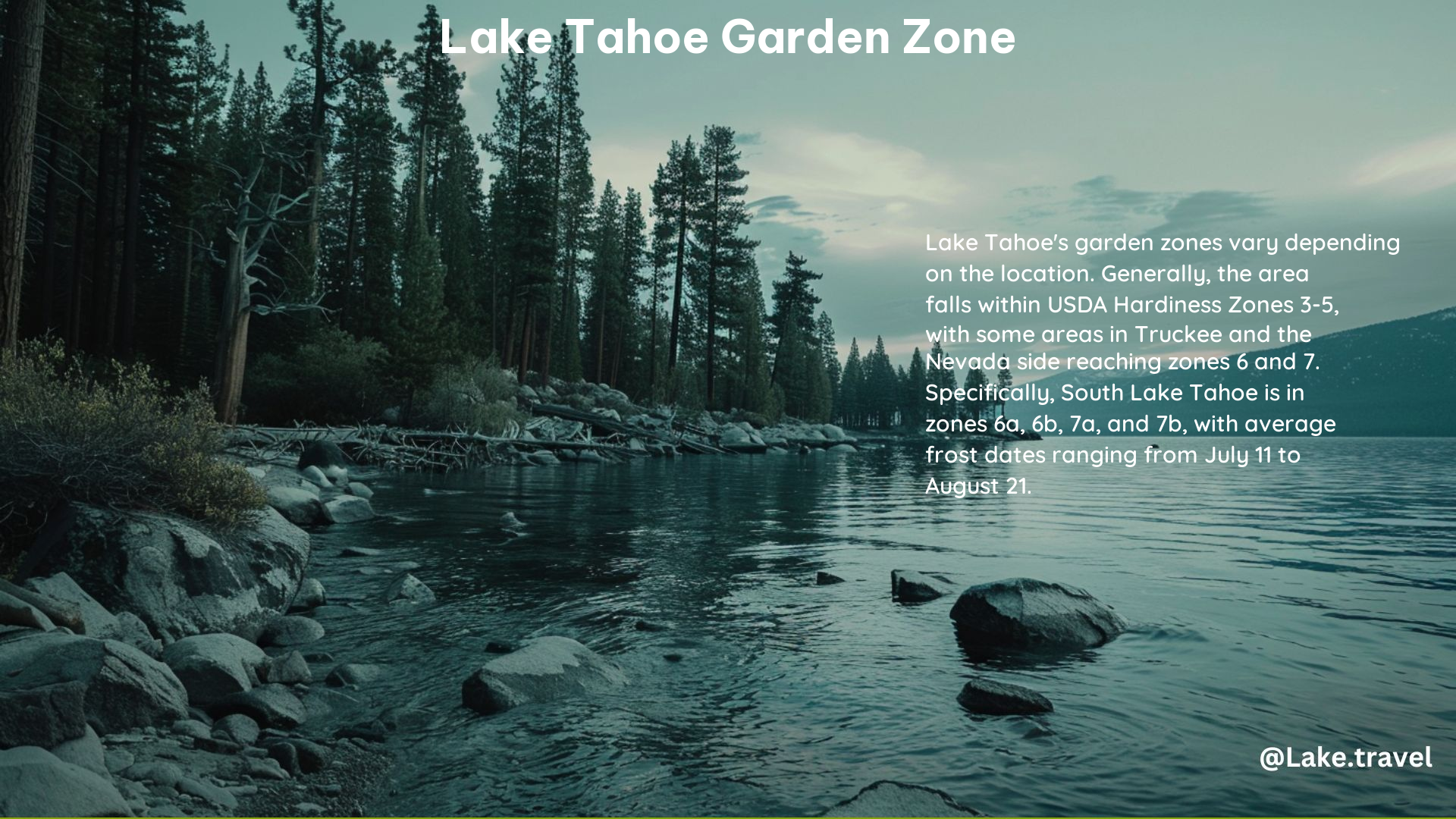Lake Tahoe, nestled in the Sierra Nevada mountains, presents a unique and challenging climate for gardeners. With its diverse terrain, varying elevations, and distinct microclimates, understanding the Lake Tahoe Garden Zone is crucial for successful plant cultivation. In this comprehensive guide, we’ll explore the recommended USDA Hardiness Zones, the impact of microclimates, and the best plants to thrive in this picturesque region.
Recommended USDA Hardiness Zones for Lake Tahoe Gardening
The Lake Tahoe region spans multiple USDA Hardiness Zones, which are essential for determining the types of plants that can flourish in the area:
- South Lake Tahoe: The majority of this area falls within USDA Hardiness Zone 5, with some parts of the Nevada side reaching Zone 6. However, the Christmas Valley and Meyers regions are typically in Zone 4.
- Truckee: This area is primarily in USDA Hardiness Zone 6a, with temperatures ranging from -10°F to -5°F.
- El Dorado Hills: This region is located in USDA Hardiness Zone 9b, with temperatures between 25°F and 30°F.
Microclimates in Lake Tahoe and Their Impact on Plant Growth

The Lake Tahoe region is known for its diverse microclimates, which can significantly impact plant growth and success. Understanding these microclimates is crucial for gardeners:
Elevation
Higher elevations in Lake Tahoe experience colder temperatures and shorter growing seasons, while lower elevations are generally warmer and have a longer growing period.
Sun Exposure
Areas with full sun exposure, especially those with southern exposures, can support a wider variety of plants. Shaded areas may require more shade-tolerant species.
Soil
The soil in Lake Tahoe is primarily sandy, which can affect water absorption and plant growth. Amending the soil with compost and other organic materials is essential for successful gardening.
Wind
Certain areas, such as the Angora Fire area, experience high winds, which can necessitate the use of more wind-resistant plant species.
Additional Factors to Consider for Lake Tahoe Gardening
Gardening in the Lake Tahoe region requires consideration of several additional factors:
- Frost-Free Growing Season: The frost-free growing season in Lake Tahoe is approximately 93 days, from June 18 to September 19.
- Temperature Extremes: The region can experience significant temperature fluctuations, making it crucial to choose plants that can tolerate these conditions.
- Watering: Due to the dry climate, plants in Lake Tahoe require careful watering. Raised beds and wine barrels can help manage irrigation and protect plants from frost.
Popular Plants for Lake Tahoe Gardens
When selecting plants for your Lake Tahoe garden, consider the following options:
Native Plants
Using native plants is a wise choice, as they are adapted to the local climate and require less maintenance.
Vegetables
Short-season vegetables, such as herbs, cherry tomatoes, and snap peas, can thrive in Lake Tahoe’s climate.
Trees and Shrubs
Some popular tree species for Lake Tahoe include Aspens, Chokecherries, Maples, and Mountain Ashes. Shrubs like Blueberries and Raspberries also perform well in the region.
Resources for Lake Tahoe Gardeners
If you’re a gardener in the Lake Tahoe area, here are some valuable resources to help you succeed:
- Tahoe Outdoor Living Nursery: A local nursery with expert staff who can provide guidance on plant selection and gardening in the Lake Tahoe climate.
- Slow Grow Tahoe: Offers resources and events for high-elevation edible gardening, including the Grow Your Own Festival.
- UC ANR: Provides detailed information on planting zones, soil types, and gardening in the Lake Tahoe region.
By understanding the unique characteristics of the Lake Tahoe Garden Zone, gardeners can create thriving and beautiful landscapes that complement the region’s natural beauty. With the right plant selection, soil preparation, and attention to microclimates, you can enjoy a successful and rewarding gardening experience in this stunning mountain oasis.
References:
– http://southtahoenow.com/story/05/30/2023/south-lake-tahoe-gardening-getting-started-101
– https://ucanr.edu/sites/mglaketahoe/Gardening_in_Tahoe/Tahoe_Friendly_Garden_Program/Additional_Resources/Planting_Zones_in_Lake_Tahoe/
– https://www.plantmaps.com/96150
– https://ucanr.edu/sites/mglaketahoe/files/294918.pdf
– https://tahoetreecompany.com/tips-tricks/
